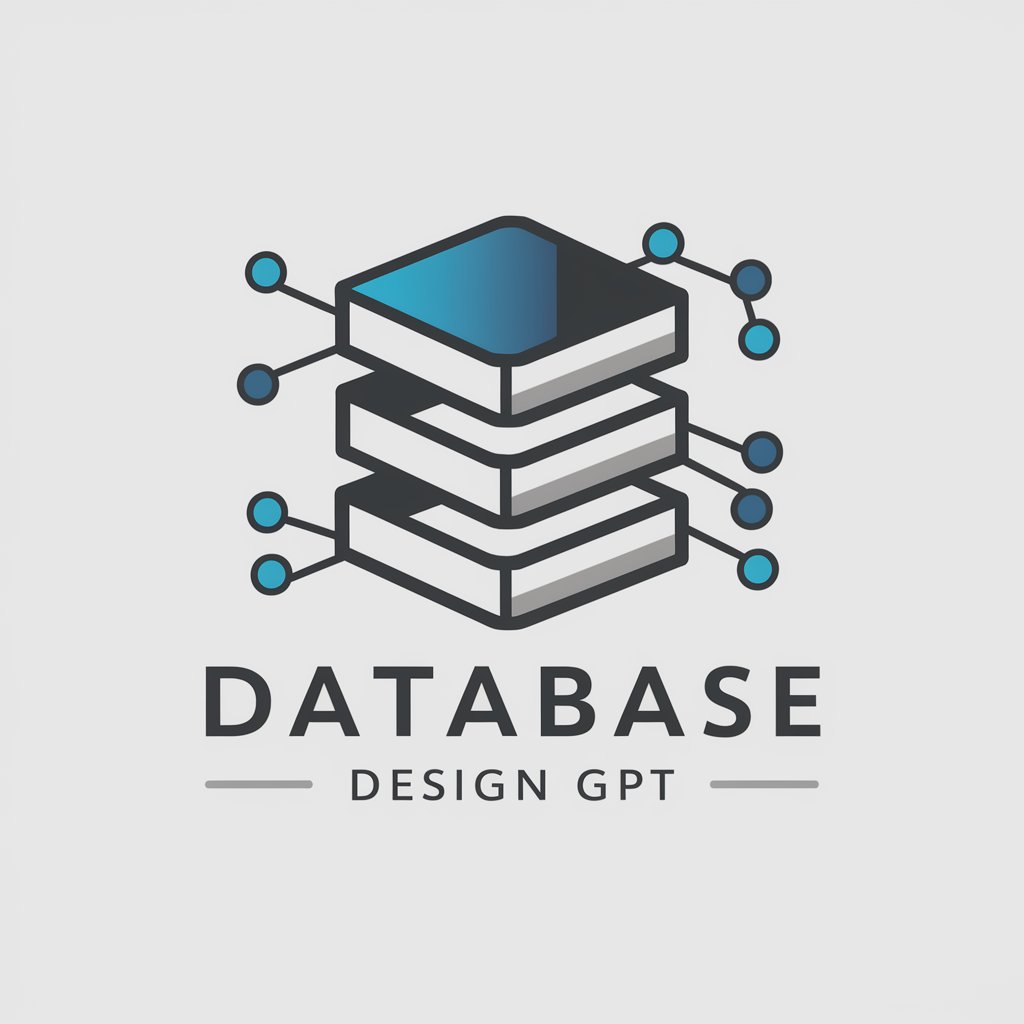Database Design - Comprehensive Database Design

Welcome! Let's build and optimize your database.
Architecting Data for Intelligent Decisions
How to optimize your database schema for better performance...
Best practices for developing a relational database from scratch...
Tips for improving database security and integrity...
Understanding the differences between OLTP and OLAP systems...
Get Embed Code
Introduction to Database Design
Database Design involves structuring a database to efficiently store, retrieve, and manage data supporting various business processes. It entails defining how data is stored, organized, and accessed in systems ranging from simple single-user databases to complex multi-user systems. An example scenario illustrating this is a retail company aiming to optimize inventory management, where Database Design ensures product information, stock levels, and supplier data are systematically organized for easy access and analysis. Powered by ChatGPT-4o。

Main Functions of Database Design
Data Structuring
Example
Creating tables with rows and columns to store data
Scenario
Organizing customer data for a CRM system, where each customer's details are stored in a structured format, facilitating efficient data retrieval and management.
Data Integrity and Security
Example
Implementing data validation rules and access controls
Scenario
Ensuring that only authorized personnel can access sensitive financial records in a banking system, maintaining data accuracy and confidentiality.
Performance Optimization
Example
Indexing and query optimization
Scenario
Improving the speed and efficiency of data retrieval in a large-scale e-commerce platform, enhancing user experience through faster search and filtering capabilities.
Data Warehousing and Business Intelligence Integration
Example
Consolidating data from multiple sources into a central repository
Scenario
Aggregating sales, inventory, and customer interaction data into a unified data warehouse for advanced analytics and strategic decision-making in retail.
Ideal Users of Database Design Services
Business Analysts and Data Scientists
Professionals who rely on accurate, well-structured data for analysis, forecasting, and strategic planning. Database Design enables them to extract meaningful insights and make informed decisions.
IT Professionals and Database Administrators
Experts responsible for the technical aspects of managing data, including database design, maintenance, and optimization. They benefit from Database Design by ensuring systems are efficient, secure, and scalable.
Business Owners and Managers
Individuals who need a reliable foundation for their operational and decision-support systems. A well-designed database supports business operations, customer relationship management, and strategic initiatives.

Using Database Design Effectively
Initiate Trial
Begin by accessing yeschat.ai for a complimentary trial, which requires no login or ChatGPT Plus subscription.
Understand the Basics
Gain a foundational understanding of database concepts, including data modeling, SQL, and normalization techniques.
Identify Requirements
Determine the specific needs and objectives of your database project, such as data storage, retrieval, and analysis requirements.
Design and Model
Utilize tools and techniques like ER diagrams and UML to design and model your database, ensuring it aligns with your identified requirements.
Implement and Evaluate
Build the database using a suitable DBMS, populate it with data, and evaluate its performance and effectiveness in meeting your needs.
Try other advanced and practical GPTs
🎁 Gift Agent (#1 Personalized Gift Ideas Expert)
Find the Perfect Gift with AI Assistance

Documentation Finder
Unlock knowledge with AI-powered searches

Image editor
Enhance Your Images with AI-Powered Precision

AI TeachBoost
Empowering Education with AI Insight

Legal Insight
Demystifying Law with AI

Ask the $Zeph spaces (on 20th/22nd Nov) a question
Unlocking Zephyr's Secrets with AI

Landing Lead
Transform clicks into customers with AI

Co—Sign
Navigate life with AI-powered astrology

SEO Content Rewriter
Revolutionizing Content, Empowering SEO

Market Maven
Empower Your Marketing with AI Insight

Recommended video search
Discover Videos with AI Precision

AI Writer, Content Generator
Revolutionize Writing with AI Power

Database Design Q&A
What is the importance of data normalization in database design?
Data normalization is crucial for reducing data redundancy, improving data integrity, and enhancing query performance by organizing data in a logical, efficient manner.
How does an ER diagram assist in database design?
ER diagrams help visualize the relationships and structures of data elements, aiding in the effective planning and clarity of database design.
Can you explain the role of SQL in database design?
SQL (Structured Query Language) is essential for defining, manipulating, and querying data in a relational database, serving as the primary language for database interaction.
What are the key considerations when choosing a DBMS for a project?
Key considerations include the scale of data, security requirements, support for specific data models, performance needs, and the system's compatibility with existing technologies.
How does business intelligence integrate with database design?
Business intelligence relies on well-designed databases to store, process, and analyze data, enabling informed decision-making through data-driven insights.
